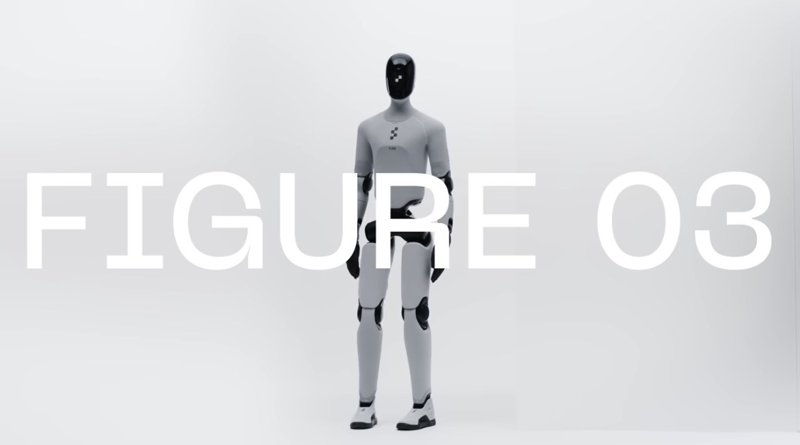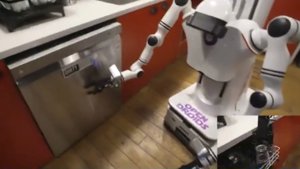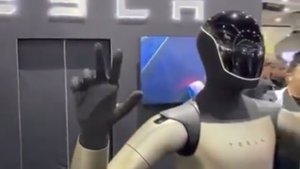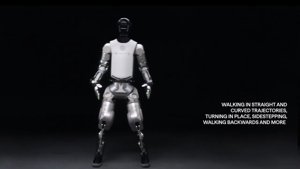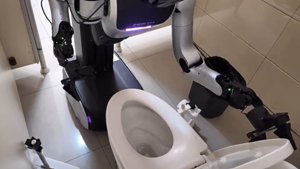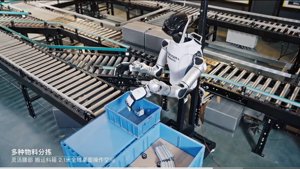Just when you thought the world had enough bipedal robots to populate a sci-fi blockbuster, complete with dramatic slow-motion falls and existential crises, another one strides onto the scene. Prepare to meet Figure 03, the latest creation from Figure AI. Now, before you roll your eyes so hard they might just get stuck and mutter something about the uncanny valley — hold that thought. While the humanoid robot arena is indeed getting crowded enough to require a rather stringent ticketing system, Figure 03 is making a compelling case for itself not with ostentatious backflips or gravity-defying acrobatics, but with subtle, brutally practical design choices that might actually, you know, matter in the real world.
Figure AI, founded in 2022 by serial entrepreneur Brett Adcock, isn’t just building a glorified science fair project. Adcock, who previously founded Archer Aviation and Vettery, has meticulously assembled a dream team of veterans from robotics powerhouses like Boston Dynamics, Tesla, and Google DeepMind. The company’s stated mission is to deploy humanoids to address pressing labour shortages, and it’s backed by a truly colossal war chest, brimming with cash from the likes of Jeff Bezos, Microsoft, NVIDIA, and OpenAI. Let’s be clear: this isn’t some plucky garage startup; it’s a heavyweight contender from day one, stepping into the ring with serious intent.
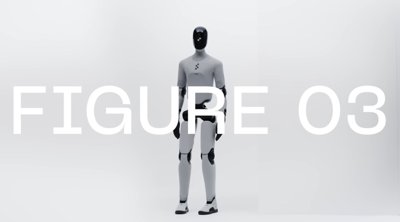
Beyond the Backflip: Designed for the Real World, Not Just the Demo Reel
At first glance, Figure 03 is undeniably sleek. It’s less “terrifying industrial terminator poised to conquer humanity” and more “chic Apple Store appliance that might just fetch your artisanal coffee.” But the truly important details are less about its minimalist aesthetic and far more about its core engineering. The company has undertaken a ground-up redesign, relentlessly focused on a few key areas: its sophisticated AI system (dubbed Helix), uncompromising safety for both home and work environments, and—crucially, perhaps even heroically—mass manufacturing.
This isn’t merely about looking good for the cameras; it’s about being profoundly practical. The robot is artfully covered in soft textiles and multi-density foam to eliminate any potential pinch points and make it demonstrably safer to be around us squishy, easily damaged humans. It’s also a respectable 9% lighter than its predecessor, rendering it considerably more manoeuvrable in the often-cluttered, gloriously imperfect spaces of the real world.
It’s All in the Hips (and Toes), Apparently
While Boston Dynamics’ Atlas continues to wow the internet with its breathtaking parkour routines – seriously, have you seen that robot do a backflip? – Figure 03 is focused on a more subtle, yet arguably far more complex, form of movement: navigating human spaces with seamless efficiency. The promotional videos highlight a fluid, almost organic gait that seems notably less robotic than many of its peers. A key innovation appears to be in the cleverly redesigned hip mechanism and the thoughtful addition of articulated toes, quite similar to those found on Tesla’s Optimus. This ingenious design allows the robot to push off and land more like a person, enabling superior balance and smoother walking – a truly critical feature for navigating anything other than a perfectly flat, pristine lab floor.
A Smarter Way to Juice Up
One of the most tedious, unglamorous, and frankly infuriating problems in the entire field of robotics is charging. Cables are an absolute nightmare for true autonomy, a spaghetti junction of potential trip hazards and entanglement. Figure 03 elegantly sidesteps this perennial headache with wireless inductive charging. The robot simply steps onto a charging pad discreetly embedded in its stand, drawing a robust 2 kW of power without the need for clumsy fumbling with a plug. This is a massive quality-of-life feature for real-world deployment, enabling the robot to operate with vastly greater autonomy and potentially work in shifts with quick, efficient top-ups – an absolute necessity for its planned 5-hour operational cycle.
A Vision for the Future (That Isn’t Just Blurry Pixels)
You simply cannot have a truly useful robot without a sophisticated sensor suite, and Figure 03 is, quite rightly, packed to the digital gills with cameras. The new vision system boasts double the frame rate and an impressive 60% wider field of view per camera compared to the previous model. But the cleverest trick, the one that makes you nod sagely and mutter “aha!”, is the placement of cameras directly in the palms of the hands. This ingenious positioning provides the robot with a close-up, first-person view of intricate manipulation tasks, brilliantly solving those infuriating occlusion problems where its own fingers might otherwise block the view from its head-mounted cameras. It’s a simple, elegant, and utterly brilliant solution for dramatically improving grasping and fine motor skills.
The true brain behind this impressive hardware is Helix, Figure’s pioneering vision-language-action AI model. Bolstered by a strategic collaboration with OpenAI, the system is meticulously designed to process and reason from natural language, allowing it to understand complex verbal commands and learn from observing human actions. This, my friends, is the unequivocal key to creating a truly “general-purpose” robot that isn’t forever limited to a mere handful of pre-programmed tasks.
The Humanoid Robot Hunger Games Commence
Figure 03, much like a budding rock star, doesn’t exist in a vacuum. The field is already undeniably crowded, with Tesla’s Optimus being developed with ambitious mass production in mind from day one, and Boston Dynamics’ Atlas remaining the undisputed, gravity-defying king of dynamic movement. Yet, Figure seems to be expertly carving out a pragmatic middle ground, a niche of sensible, real-world utility. While Tesla is laser-focused on deploying its creations within its own sprawling factories and Atlas feels more akin to a cutting-edge research platform, Figure has already inked a significant deal with BMW to deploy its robots in an automotive manufacturing facility. That, dear reader, is a vote of confidence.
The company’s fervent focus on manufacturability—making the strategic shift from expensive CNC machining to more cost-effective methods like die casting and plastic injection moulding—signals a clear, unwavering intent to scale production with impressive rapidity. CEO Brett Adcock has openly stated ambitions to produce up to 12,000 units per year, with a highly ambitious long-term goal of rolling out a staggering 100,000 robots over just four years.
So, is Figure 03 the one? The robot that finally breaks free from the lab and truly integrates into our lives? It’s far too early to call the race definitively. The monumental leap from a slick, highly edited video to thousands of reliable units diligently working 10-hour shifts in a bustling factory is, frankly, gargantuan. But by steadfastly focusing on the often-unsexy, brutally practical problems – like efficient charging, inherent safety, and genuine manufacturability – Figure AI is making an incredibly compelling argument that it’s not just building another fleeting demo. It’s building a product. And in the brutal, unforgiving world of robotics, that might just be the cleverest trick of all.
